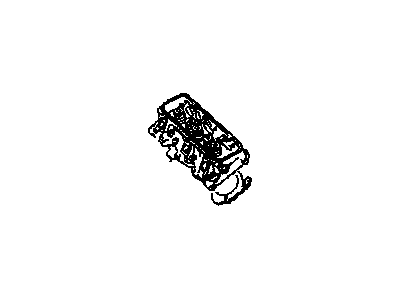
My Garage
My Account
Cart
Genuine 1982 Chevrolet Caprice Cylinder Head
Head- Select Vehicle by Model
- Select Vehicle by VIN
Select Vehicle by Model
orMake
Model
Year
Select Vehicle by VIN
For the most accurate results, select vehicle by your VIN (Vehicle Identification Number).
1 Cylinder Head found
- Product Specifications
- Other Name: F, Head, Rem
- Condition: New
- Fitment Type: Direct Replacement
- SKU: 12337563
- Warranty: This genuine part is guaranteed by GM's factory warranty.
1982 Chevrolet Caprice Cylinder Head
We are your prime source for competitively priced and high-quality OEM 1982 Chevrolet Caprice Cylinder Head. We provide you with parts that will allow you to save a lot of money without sacrificing quality. All our OEM parts are backed by the manufacturer's warranty and shipped out at a swift rate.
1982 Chevrolet Caprice Cylinder Head Parts Questions & Experts Answers
- Q: What steps should be taken to inspect and maintain the cylinder head in V8 engine on 1982 Chevrolet Caprice?A: Carefully inspect the head for cracks around and inside the exhaust ports, combustion chambers, or external cracks to the water chamber. Check the valve stem-to-guide clearance using a dial indicator by placing a valve in its installed position with the valve head slightly off its seat. Attach a dial indicator to the head, touching the valve stem where it exits the cylinder head, and move the valve from side to side, noting the movement on the dial indicator. If the valve stem clearance exceeds specifications, an oversize valve must be used after reaming the valve guide, which should be handled by a dealer or machine shop. Excessive clearance can lead to excessive oil consumption, while insufficient clearance may cause noisy operation and valve sticking. Inspect each valve spring and its damper, replacing any that are deformed, cracked, or broken. Check valve spring tension using GM tool J-8056, compressing the springs to a specified height and measuring the required tension without the dampers; if not within 10 lbs of the specified load, replace the spring. Inspect rocker arm studs for wear or damage, noting that on Mark IV V8 and some high-performance small V8 heads, pushrod guides are retained by nuts on the rocker arm studs, which can be unscrewed for guide replacement. When assembling, coat the new stud with gasket sealant and torque tighten. On small V8 engines, the studs are pressed in, and replacement involves reaming the stud holes slightly oversize, lubricating the new studs with hypoid axle oil, and pressing them in to their original depth. Check pushrods for warping by rolling each on a clean, flat piece of glass; any that are not perfectly straight or free from damage should be replaced. Check the cylinder head for warpage by placing a straightedge across its length and measuring gaps between the straightedge and the head surface with a feeler gauge at three points across the head gasket surface and diagonally. If warpage exceeds 0.006 in at any point with a straightedge spanning the entire head, resurfacing is necessary, and using a straightedge with a span of 6 inches should not exceed 0.003 in. Cylinder head resurfacing should be performed by a professional automotive machine shop, and note that resurfacing the cylinder head will slightly alter the intake manifold position, requiring it to be resurfaced proportionately.







